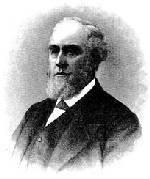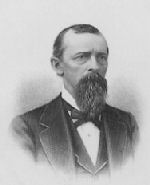Wason Mfg. Co. - Page 3
In 1906, Wason became a wholly-owned subsidiary of the J.G. Brill Company, another firm concentrating on electrified cars. But either Wason never gave up completely on cars for steam railroads, or Brill got it back into that line, for among other things, we know that in 1907 Brill’s Wason plant built six 70'-0" steel coaches for the Lehigh Valley Railroad, and in 1908 the Wason Manufacturing Company built 13 combination baggage and postal cars for the New York Central Railroad.
Among other things, Wason supplied bodies for a number of gasoline engine self-propelled Rail Motor Cars and locomotives built and equipped by General Electric between 1909 and 1915, and for at least one of the first demonstration diesel-electric locomotives.
But with the advent of the automobile, the market for street railway cars declined, and Wason tried replacing its railcar trade with busses, automotive bodies, airplane parts, motorboats, and portable gas stations. During the 1st World War Wason built airplanes for the war effort.
In the late 1920s, Wason developed the country’s first all-steel highway diners, built at their plant in Springfield, and marketed through Brill Steel Diners (picture on Brill page.) On 1 February 1931, the company reorganized as J.G. Brill of Massachusetts, but it could not survive the Great Depression, and it officially closed in 1932. Cast of Characters —
How the brothers got started actually building cars seems lost to history, but they did, and in a very primitive way, one at a time, dressing the timbers by hand and buying the hardware from local foundries. They got a major boost up when they were able to acquire the tools and works of a much better-capitalized effort that had inexplicably gone belly-up. Thomas proved both a good mechanic and a good businessman, and built the business into the earliest large car builder in the United States.
At the end of one year this partnership was dissolved, and he sold his interest in the car department. But he hung on to the foundry until 1874. In connection with Messrs. S. M. Carpenter and Philo Tilden he built the Manhattan blast furnace, near Toledo, and in 1865 he formed a partnership with Messrs. Carpenter and Wm. F. Smith, and erected the Fulton foundry in Cleveland, making the manufacture of car wheels a specialty. In 1873 he went with his partners in the Fulton foundry to Chattanooga, Tennessee, and purchased a car wheel foundry and 14 acres of land, formed a joint stock company, and erected complete works for car building. The name of this corporation was “The Wason Car and Foundry Company,” of which he was president. It seemed to open a new era in southern car building, as plants opened in several other cities, but nothing truly major in the way of a car plant located in the South until the steel-car era when Pullman opened its plant in Birmingham, Alabama, in 1929. [We would like to know more about Charles Wason and “The Wason Car and Foundry Company.” If you have such information, would you please share it with us?]
George had other business interests besides the Wason company. In 1872, in company with Richard Henry Hopkins of Hinsdale, New Hampshire, whom he had very likely known since his youth, he built a paper mill at Hinsdale under the firm name of Fisk & Hopkins Paper Company. And at some point he became involved with the Fisk family’s soap business, which had been founded in 1853 by his father Thomas T. Fisk. In 1880, he and his brother Noyes incorporated the business as the Fisk Manufacturing Company with George as president and Noyes as treasurer. By 1884, this business employed 40 men, producing 150 tons of soap per week. {463} In 1881, George was one of the organizers of the Springfield Steam-power Company, which supplied steam to a number of manufacturers. This company bought the old works of the Wason Manufacturing company near the Union Railroad Depot on Lyman Street, and by 1884 was quite a substantial business, of which he was president. {457} Henry Stanley Hyde (1837-1895+) was born at Mount Hope, New York, but his parents soon moved to Detroit, and it was there he was raised and educated. He worked in a bank, and read law for a bit, but did not pursue that profession. We have no idea exactly when he located in Springfield, but we do know he married Thomas Wason’s daughter Jennie in 1860. When the Wason firm was incorporated in 1862, he became its “clerk” (we presume this means bookkeeper). By 1883 he was secretary of the corporation, vice-president of several others, and president of yet several others.
Milton became interested in the idea of Kindergarten, and established Springfield’s first Kindergarten, with his daughters as pupils and himself, his wife and his father as teachers. In 1869, he published the first American book on the subject. He went on and published a number of books, manuals and newsletters on the subject, as well as other children’s books. He was also interested in colors, working out a formula for each so it could be accurately reproduced, and writing four books on teaching color to children. In 1880, he expanded the business further by creating jigsaw puzzles. Milton Bradley died in 1911, but the company he created went marching on ... Back to page 1 |







